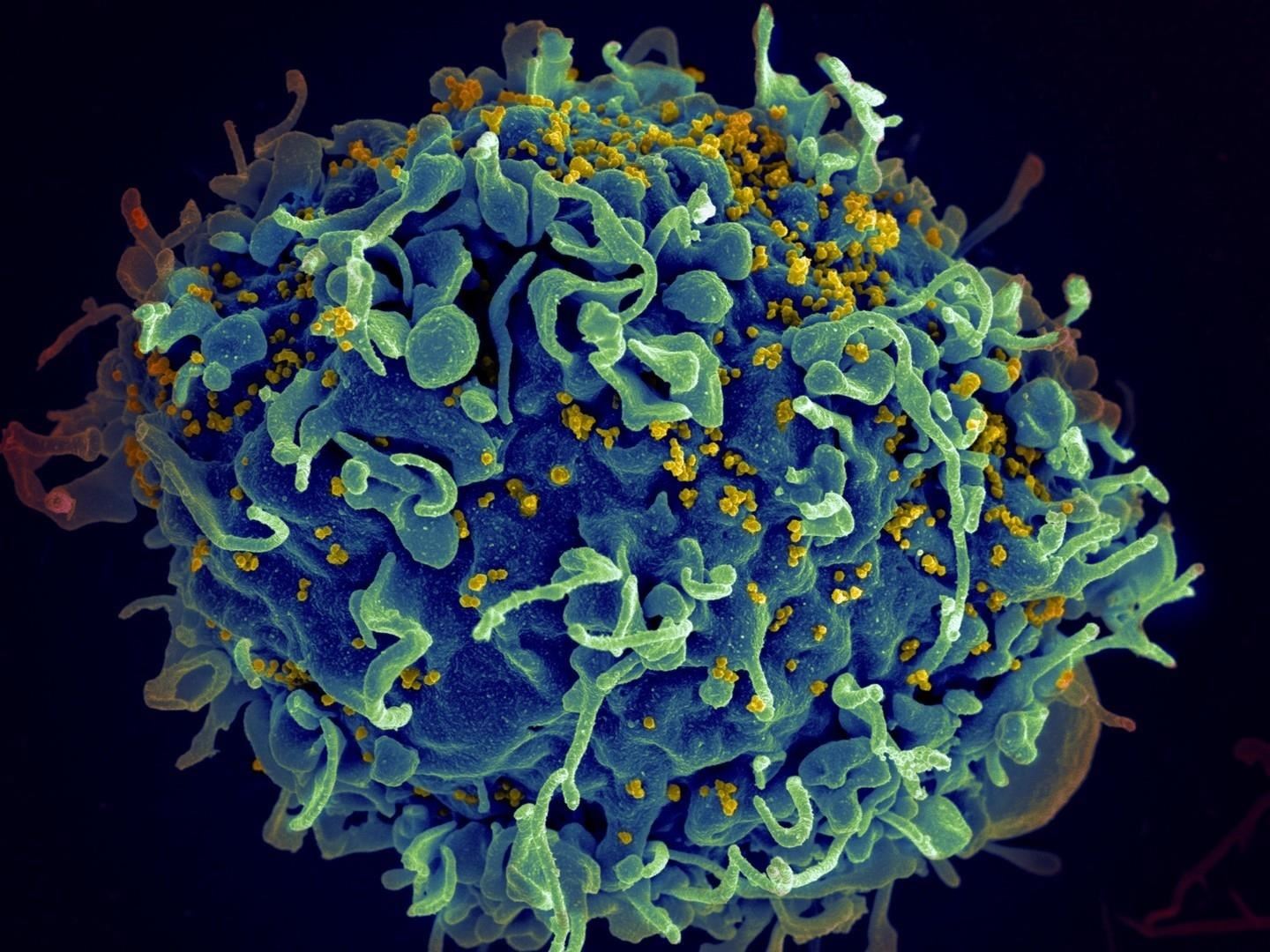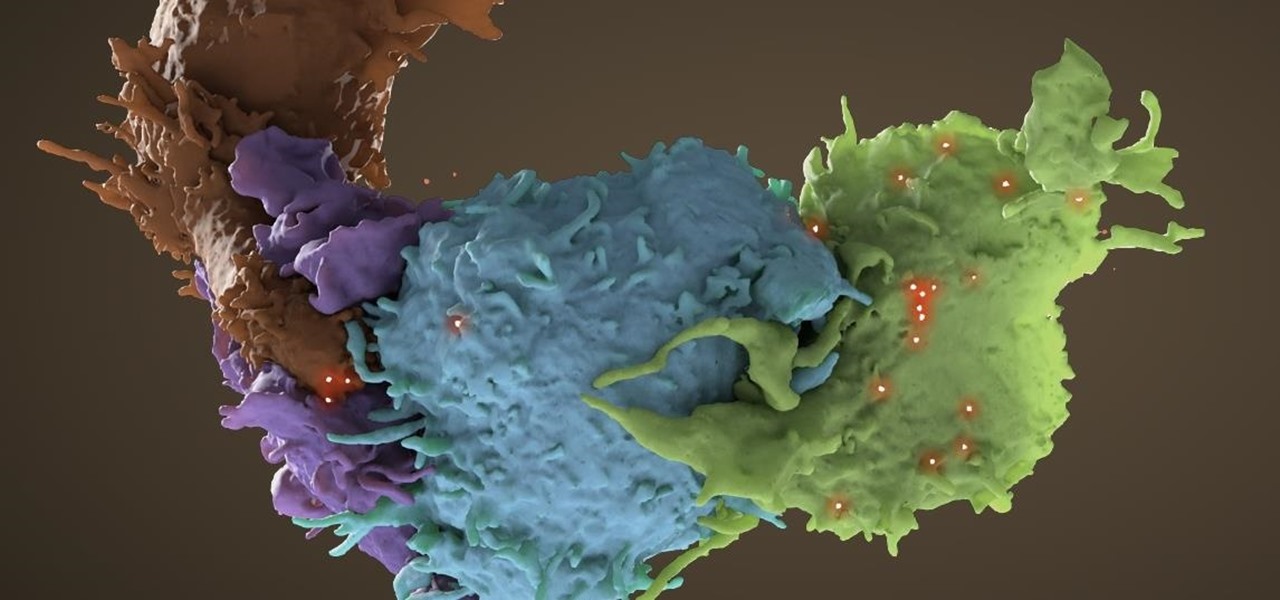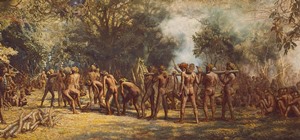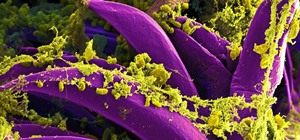Tremendous strides have been made in the treatment and outlook for patients infected with HIV, the human immunodeficiency virus. Treatment with a combination of antiretroviral drugs can keep patients with HIV alive for decades, without symptoms of the infection. The trouble is, if HIV-infected people stop taking their medications, the virus takes over in full force again—because the virus hides out quietly in cells of the immune system, kept in check, but not killed by the treatment.
These latent reservoirs of HIV virus have been the holy grail for HIV researchers who believe a cure for the disease will involve targeting the cells harboring the undetectable virus. Now, a team of researchers in France has reported identifying the population of white blood cells that harbor the latent HIV virus. Benjamin Descours and Gaël Petitjean, virologists from the University of Montpellier in France, and their colleagues, have published their findings in Nature.
HIV infects and specifically targets cells of the immune system called CD4 T lymphocytes for killing—the very same cells that would be fighting the viral infection. Early symptoms of an HIV infection can be similar to the flu, with fever, rash, and headache. If the infection progresses to where most of the CD4 population is depleted, people start to get infections they cannot fight and they become life-threatening.

Once the infection is controlled with antiretroviral medication, most of the CD4 cells no longer are infected with virus and are healthy and functional, but a subset remain infected with a virus quietly hiding in them. The virus doesn't multiply there or go out and infect other cells.
Since the healthy cells and the ones harboring latent virus are both CD4 cells, the French study team looked for protein markers on some of the cells that would distinguish the infected from the healthy CD4 cells.
The researchers used lab techniques to find 103 genes that were specifically increased in HIV-infected cells. When they tested HIV-infected CD4 T cells to see which genes resulted in production of a protein they could detect on the cells' surfaces, they found a protein called CD32a was the most highly detected protein on the cells known to contain HIV virus. There was no detectable protein on CD4 cells that weren't infected with HIV.
Using an antibody that finds and sticks to CD32a, the researchers then pulled cells with CD32a on their surface from blood samples from 12 HIV infected people who were receiving antiretroviral therapy. These were quiet T cells that also harbored copies of HIV DNA within the cells. The viral DNA was waiting and ready to replicate when needed to start a new infection.
"You absolutely could not have done that before now," said author Monsef Benkirane, a virologist from the University of Montpellier in France, in an article in Nature News.
In a test tube, the previously quiet CD32a cells were activated by mixing them with antibodies they would react to. The activated CD32a cells then started to produce viruses capable of infecting healthy cells. If the CD32a cells were eliminated, there was a significant delay in viral production, further evidence that they were a major contributor to the elusive latent viral pool.
The new study by Descours, Petitjean, and colleagues has garnered the attention of other scientists who have been long-awaiting the identification of HIV's latent cell population.
"I really hope this is correct," Anthony Fauci, director of the US National Institute of Allergies and Infectious Disease, told Nature News. "The fact that this work has been done by such competent investigators, and the data looks good, makes me optimistic."
The Infection That Can't Be Detected, but Doesn't Go Away
HIV infected people living in the US and Canada, especially those treated before their CD4 count falls below 350 cells per microliter, now have life expectancies equal to the general population, according to recent studies.
Twenty-five drugs are approved by the Food and Drug Administration to treat HIV. Patients are usually treated with a combination of drugs to knock out different functions of the virus and prevent the virus from replicating. Because the HIV in a latent reservoir of cells aren't producing new copies of the virus, HIV drugs have no effect on them.
Since the first reports in 1981 of what would eventually be known as an HIV infection, the world has searched for a way to cure it. To truly cure an HIV infection, the latent virus hidden away must be found and eliminated.
It looks like we have just discovered a way to pick those sneaky cells out of the crowd of cells in the body. Now, we can work on targeting them for elimination of the virus they hide.
Just updated your iPhone? You'll find new emoji, enhanced security, podcast transcripts, Apple Cash virtual numbers, and other useful features. There are even new additions hidden within Safari. Find out what's new and changed on your iPhone with the iOS 17.4 update.






























Be the First to Comment
Share Your Thoughts